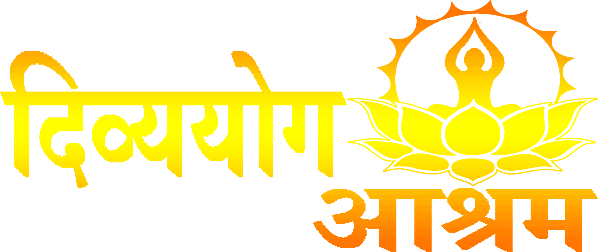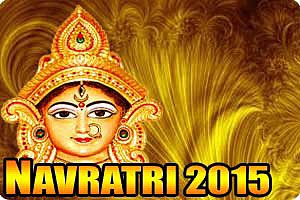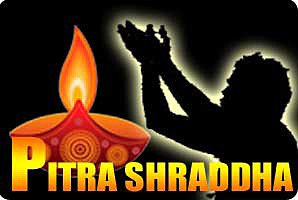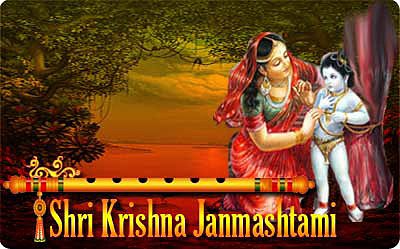The ultimate sacredness of the "NIGHT OF LAKSHMI PUJA" (Deepavali)
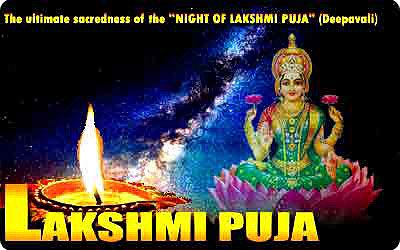
Lakshmi Puja this can be a Hindu religious prayer sung on Amavasya, the third day of Diwali. Devotees show reverence to the Goddess Lakshmi by placing small oil lamps or candles inside and outside their homes. They pray for prosperity and well-being for their own families and businesses.
Based on legend, Lakshmi, the goddess of wealth and Vishnu's wife, visits her devotees and bestows gifts and blessings upon each of these them. To welcome the Goddess, devotees clean their houses, decorate them finery and lights, get ready sweet treats and delicacies as offerings. Devotees believe the happier Lakshmi is with the visit, the greater amount of she blesses the family with health and wealth.
Lakshmi Puja, and the worship no matter what the goddess of wealth, is probably the leading event of Diwali in North and West India. It is popularly thought that Lakshmi likes cleanliness and will visit the cleanest house first.
Hence, the broom is worshiped with offerings of haldi (turmeric) and kumkum (vermilion) within this day. Lamps are lit after work hours to welcome the goddess because are said to illuminate her path. On this day, a supported light of knowledge is known to dawn upon humanity. This self-enlightenment is expressed throughout the twinkling lamps that illuminate the abode no matter the worshippers. It's thought that on at the present time, the goddess walks within the green fields and loiters in the by-lanes and showers her blessings on mankind for glory and prosperity.
The third day's Diwali is regarded as the most auspicious day; this is when Lakshmi Puja is performed. With pomp and ceremony, Lakshmi is invited into the properties of devotees to partake whatever the gifts that are part of the puja.
Lakshmi Puja comprises a combined puja of five deities: Ganesha is worshiped firstly of every auspicious be Vighneshvara; goddess Lakshmi is worshiped in their three forms; Mahalakshmi the goddess of wealth and cash,
Mahasaraswati the goddess of books and learning and Mahakali. Kubera the treasurer of the gods can also be worshiped..
At first, the houses are cleaned and a rangoli is drawn on the doorstep to welcome Goddess Lakshmi.
Lakshmi Pujan is the most auspicious and holy day ever to come into your life. No matter how difficult or tough you wish/desire is and how much you have been trying to make it possible but still failed in it, it will be definitely fulfilled by the holy blessing of goddess lakshmi. All of your pending works/tasks/assignments or anything in which you are not getting success will have a way open for its completion. Any kind of spiritual activity, sadhana, puja, havan, etc performed or products bought on this DIWALI NIGHT will possess a 100x times much more effect and holy energy.
....................................
To be successful in your path of your life, you can take Diksha of Lakshmi, Kanakdhara Lakshmi, Kuber Lakshmi, Ashta Lakshmi, Yakshini, Saraswati, Kali and all other kinds of wealth related diksha. Success rate goes on increasing in this night of Diwali by taking these diksha.
You can order any sadhana between 9th Nov 2015 to 11th Nov 2015 and only get the Diksha
performed on the night of diwali ( LAKSHMI PUJAN ) i.e 11th Nov. 2015.
Also any wealth related pujan performed especially on the night of Laxmi Puja will get the results benefitting you with a probability of 100x times.
....................................
Your enemies become very aware & are keen to harm you especially on this Diwali night. So you can also perform a protection puja / sadhana for the safety of you and your family from your enemies whether hidden or not.
Tantra related products become very much effective and gets charged with twice the amount of spiritual power on this night. So you can buy a spiritual product on laxmi pujan for energizing the product on this sacred night. See details on tantra products.
..................................
A special type of holy tantra product SAMMOHAN KAJAL which is prepared only on this diwali night will be made by us.

